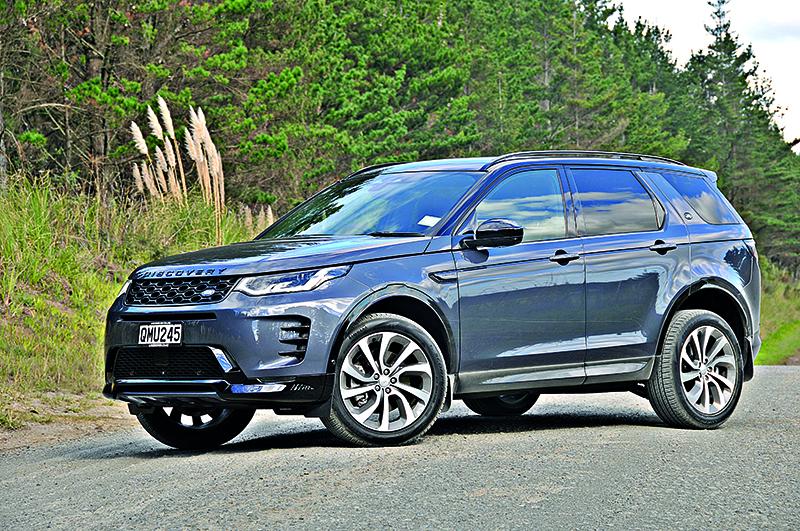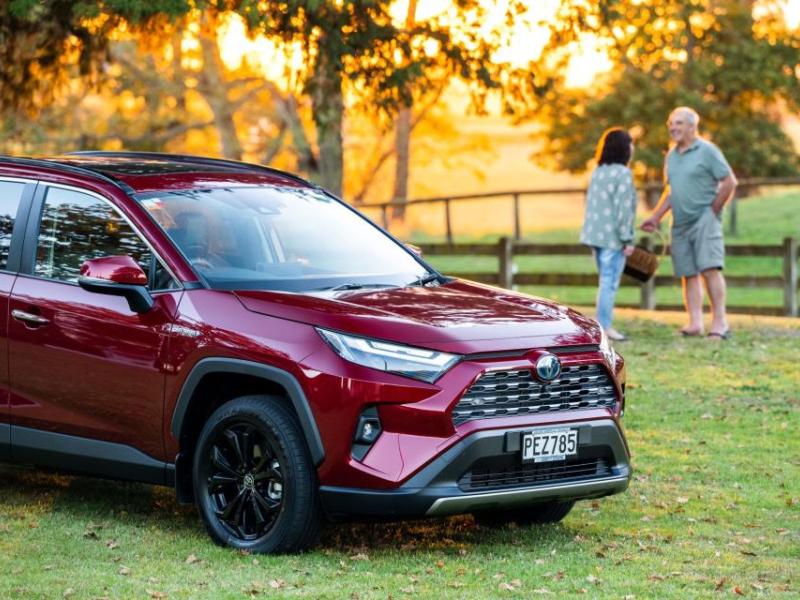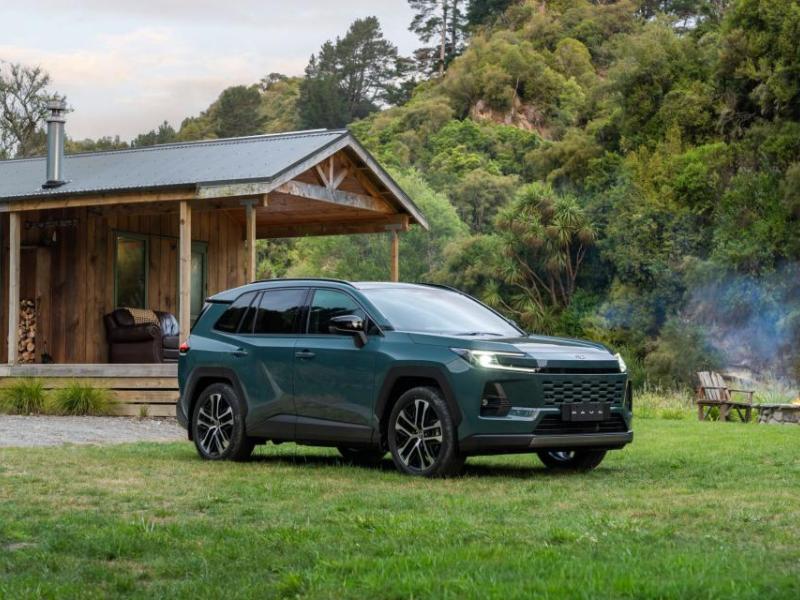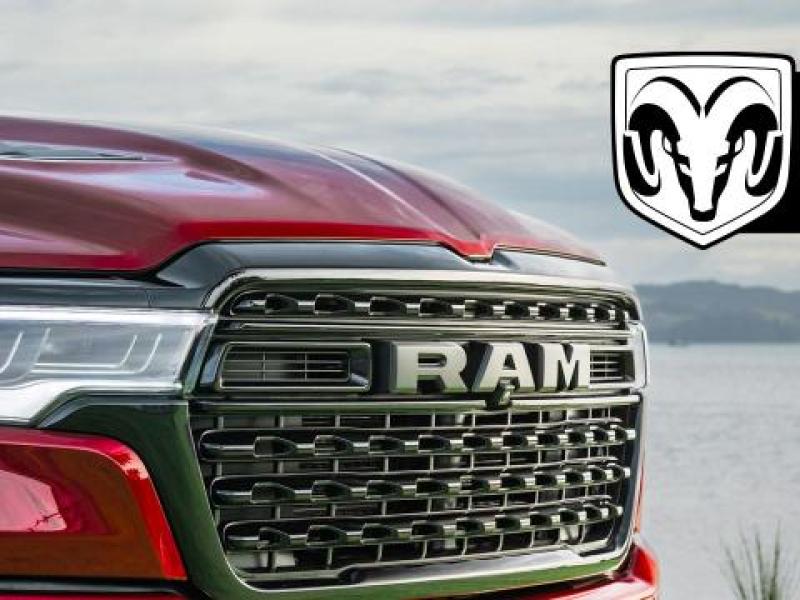Land Rover’s sleek Discovery Sport is updated for 2024 with a more modern luxury interior, latest tech and added functionality. It also stays true to its ten-year heritage.
The Sport was first shown to the public in 2014 and arrived in 2015 as Land Rover’s replacement for the Freelander. As such, it was officially a ‘compact’ SUV, at a time when the SUV category was white hot: more than 30 percent of new car sales was in this category.
Discovery Sport, sharing its mechanicals with the Range Rover Evoque, was the first of a new family of Land Rover SUVs. The Landie had decent body underguards, useful, though not ute-class approach and departure angles, a wading depth of 600mm and a terrain response system. From launch, it sat on Pirelli Scorpion tyres, which are head and shoulders ahead of pretty much any h/t tread. The wheels, then and now, are 20-inch aluminium alloy with bright diamond-cut faces.
Skip forward nine years and the 2024 Discovery Sport is a refined and capable all-road runner with some decent offroad credibility. The interior has been intensively reworked, losing buttons and switches and redirecting controls to the ‘floating’ 11.4-inch curved glass Pivi Pro touchscreen. Mindful of growing complaints from safety authorities about screens distracting drivers from their task, NZ4WD found the screen’s design one of the best in recent years. It presents key functions in a clear and logical way across the opening ‘page’, and even less essential controls like the sound system are easy to find and use on the move. Land Rover says 90 percent of tasks are accessible in two taps. Synching a phone was simple and quick, as it should be, and the ‘entertainment options include Apple CarPlay and Android Auto. Both are accessed wirelessly. There’s a wireless charging pad ahead of the (quite minimalist) shifter.
The screen also hosts the Sport’s comprehensive suite of camera technologies including a 3D surround camera, featuring ClearSight Ground View that allows the driver to see ‘through’ the bonnet for confident off-road driving.
The rest of the dash is a super-clean design with a premium feel and a focus on soft surfaces. The steering wheel is multifunction (of course), smallish and with a chunky rim right-sized for our equally chunky mitts. It’s heated too, as are the seats.
Those seats, front or rear, are superb. Leather-clad, firm but not hard in the seat base, with side bolsters in seat base and back that hold the occupant secure across rough ground. As expected, the seats are electrically adjustable with a three-position memory.
Our petrol-engined Sport five-seater was all we needed; increasingly we wonder whether seven and eight seaters are as useful as a good five-seater that folds the rear seats to reveal an enormous cargo space – in this case, up to 1,794 litres.
A third-row seat pack is a $3000 option for those who really need it.
Our Sport had the optional tow pack, which includes both metric and Imperial-sized tow balls. Braked tow rating is 2,500kg.
Above, there’s an enormous panoramic roof with tinted glass – the latter handy for the less hairy among us. Sunlight without sunburn – perfect.
Cool design abounds.
Discovery Sport doors follow the growing ‘clamshell’ trend among SUVs where the door extends right down to the bottom of the body. Advantage? This means climbing in and out of a grimy or muddy Sport doesn’t involve dragging legs and trousers across the mud or grime.
The window and mirror controls are not on the armrest, like most vehicles, but on the top of the door. Seems risky – if the window is open surely rain can hit the controls. But the profile of the window frame is such that the controls are perfectly sheltered. Clever. The controls also fall easily to hand when driving.
Safety, as expected, is built in. The airbag array is comprehensive: driver’s, front seat passenger, side curtain (for front and rear seat occupants), driver’s and front passenger’s seat-side (preventing head-clash impacts) and driver’s knee-bolster.
On the active protection front, the Driver Assist Pack’s intuitive features include adaptive cruise control and rear collision monitor. Fair warning: our test vehicle had its pack set in ‘high’ mode, and the ‘bings and bongs’ of speed limit changes and our occasional moments over the posted limit were quite intrusive. Fortunately, there’s a steering wheel button that allows the driver to reset assist mode to medium or low.
The alert that is most handy in city traffic is definitely forward collision, when some goofball swerves into the safe space the driver has left in front of the vehicle, or brakes unexpectedly (happened a couple of times).
The Sport has a true proximity key, which senses the driver’s approach to the vehicle, unlocks the doors and winds out the mirrors. Lesser vehicles wait for the driver to actually touch the vehicle before unlocking. The rear hatch is powered and opens and closes on the push of a button. In the boot, a thick ‘tray’ type rubber mat protects the carpet when messy or spiky loads are carried.
The exterior is still emphatically Discovery Sport, and shares its DNA with the rest of the family. From a design standpoint, the Sport displays clear Evoque cues, and also traditional LR features like the clamshell bonnet, so it’s definitely a looker. It’s also much bigger than Evoque, and far roomier as a result.
Our test vehicle was a P250 petrol version; PHEV and diesel-powered versions are also available. Sport models are available in S, SE and HSE trim levels, all with the three engine types. With a certified all-electric range of up to 60km, the PHEV is worth a look. It will charge from 0 to 80 percent in around 30 minutes using rapid DC charging. NZ4WD has yet to experience the other engines, but the petrol is already a firm favourite for its quiet, fuss-free operation.
The petrol version is a 184kW 2.0-litre Ingenium unit running through an eight-speed automatic. Its official 0-100km/h time is 7.8 seconds; its listed top speed is 209km/h. There are paddle-shifters on the steering wheel which are cool in open-road driving, not so handy offroad except to hold a desired gear in gluggy terrain.
The Ingenium engine family is a range of modular engines that uses a modular architecture making it possible to be produced in three-, four- and six-cylinder versions (built around individual 500 cc cylinders), depending on demand and requirements.
The ‘home’ screen on the dash has three function areas: phone, navigation and media. To right and left are climate panels for the air conditioning. Layered at the screen base are mode zones: on-road, off-road and towing. Every Discovery Sport is all-wheel drive, and offroad ability is enhanced by Land Rover’s All Terrain Progress Control and Terrain Response 2. Not enough? Tap the mode selector on the infoscreen and select ‘off-road’. A package of drive modes is revealed, with launch traction control, gradient release control, hill launch assist, and hill descent control.
On rural roads around Riverhead Forest, the Sport was in its element. Transitions from rough twisty tarmac to ripply dirt (clay) were hardly felt. The steering is quick and accurate, with 2.3 turns lock to lock. The Sport’s turning circle is excellent: 11.8m. Those Scorpion tyres look very urban with their 50-series profiles, but with a 235mm tread width they absorb corrugations and pothole impacts like no similar tyre.
We did a couple of standing starts on the dirt to gauge how the transmission would deal with differing levels of grip under power. There was no squirm, no sense that a wheel had got away from its mates. The nose came up slightly off the start, then settled as torque was distributed to the wheels.
On rougher tracks around the big log-felling areas up near Bald Hill Road, gentle momentum was the order of the day to avoid diving hard into the holes and ridges churned up by tracked machinery, but again, the transmission and tyres coped without fuss. The standard ground clearance is a healthy 212mm, approach angle 22.8 degrees (23 degrees in offroad mode), ramp-over is 20.6 and departure angle is 28.2. We would certainly pull the lever on the tow hitch and remove it when adventuring.
Brakes are well modulated, pulling the Sport up clean and straight with a confident push on the pedal. It’s not over-braked or skittish in braking, simply gets on with the job. We managed to get the ABS working twice where deep gravel had built up in middle of the road, each time tightening the Sport’s line into the corner ahead.
For edging around the city, the Sport trounces most 4WD utes and many of its rival SUVs. For a premium driving experience, it’s hard to beat. On an open-road run up the west coast of the North Island using back roads and gravel roads from Auckland to Kaukapakapa, it was perfect.







